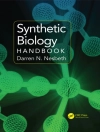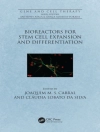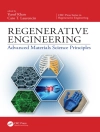The interdisciplinary field of molecular systems biology aims to understand the behavior and mechanisms of biological processes composed of individual molecular components. As we gain more qualitative and quantitative information of complex intracellular processes, biochemical modeling and simulation become indispensable not only to uncover the molecular mechanisms of the processes, but to perform useful predictions. To this end, the E‑Cell System, a multi‑algorithm, multi‑timescale object‑oriented simulation platform, can be used to construct predictive virtual biological systems. Gene regulatory and biochemical networks that constitute a sub‑ or a whole cellular system can be constructed using the E‑Cell System to perform qualitative and quantitative analyses. The purpose of E‑Cell System: Basic Concepts and Applications is to provide a comprehensive guide for the E‑Cell System version 3 in terms of the software features and its usage. While the publicly available E‑Cell Simulation Environment version 3 User’s Manual provides the technical details of model building and scripting, it does not describe some of the underlying concepts of the E‑Cell System. The first part of the book addresses this issue by providing the basic concepts of modeling and simulation with the E‑Cell System.
สารบัญ
Introduction to Whole Cell Modeling.- Foundations of E‑Cell Simulation Environment Architecture.- Distributed Cell Biology Simulations with the E‑Cell System.- A Guide to Modeling Reaction‑Diffusion of Molecules with the E‑Cell System.- A Model Library of Bacterial Chemotaxis on E‑Cell System.- Electrophysiological Simulation of Developmental Changes in Action Potentials of Cardiomyocytes.- Simulation of Human Erythrocyte Metabolism.- Dynamic Kinetic Modeling of Mitochondrial Energy Metabolism.- A Computational Model of the Hepatic Lobule.- Decoding the Signaling Mechanism of Toll‑Like Receptor 4 Pathways in Wild Type and Knockouts.- Modeling of Hsp70‑Mediated Protein Refolding.
เกี่ยวกับผู้แต่ง
Satya Arjunan is a Postdoctoral Researcher at the RIKEN Quantitative Biology Center, Japan. He received his Ph D in Systems Biology from Keio University (2009), BEng in Electronics Engineering (2000) and MSc (2003) in Computer Science from Universiti Teknologi Malaysia. He is also the recipient of the Texas Instruments Malaysia Scholarship (1997) and the Monbukagakusho Scholarship (2003). As part of his Ph D work, he developed a multicompartmental spatiotemporal stochastic simulation method, called Spatiocyte, with applications in molecular systems biology.
Pawan K. Dhar is the Director of the Centre of Systems and Synthetic Biology, University of Kerala. Prior to this he held senior scientific positions at RIKEN Genomics Sciences Centre, Japan, Bioinformatics Institute, Singapore and the E-Cell group, Keio University in Japan and Manipal University. One of his key recent contributions has been to make functional proteins from non‑coding genome. Dr. Dhar is the Founding Editor-in-Chief of the Springer’s System and Synthetic Biology Journal. Dr. Dhar heads active research programs on synthetic proteins, virtual cell and Bio CAD platform.
Masaru Tomita is a Professor and the Director General of the Institute for Advanced Biosciences, Keio University. He received Ph D in Computer Science from Carnegie Mellon University (1985), Ph D in Electrical Engineering from Kyoto University (1994) and Ph D in Molecular Biology from Keio University (1998). He is a recipient of Presidential Young Investigators Award from National Science Foundation of USA (1988) and various other awards. His current research field includes Systems Biology, Metabolomics, and Computational Biology.












